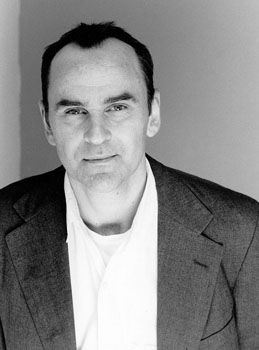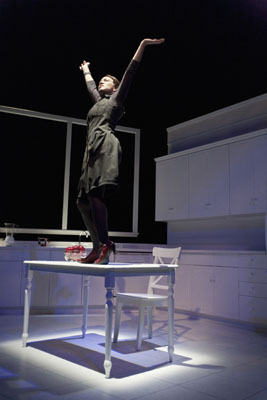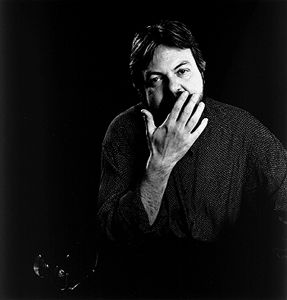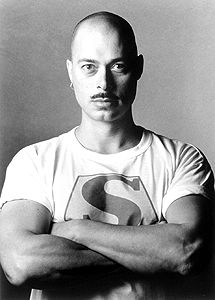The following article is an editorial written for The Canadian Encyclopedia. Editorials are not usually updated.
When I founded Buddies in Bad Times Theatre in 1979, I was fresh out of theatre school. The two buddies who started the company with me were Matt Walsh and Jerry Ciccoritti. Neither of them stayed with the theatre company past a year; neither of them was gay.

Neither was I, in 1979. But I had lots of gay feelings, feelings I was very conflicted about. Some of that conflict came from the gay theatre that I had seen in town in the late 1970s. I remember two productions made me particularly angry. One was Toronto director Paul Bettis’s Jekyll Play Hyde, performed by a company called Theatre Second Floor. The other was Salomé, created by, and starring, Lindsay Kemp from England, playing at Toronto Workshop Productions. Both pieces were, in my opinion, pretentious. But of course both also showcased extensive — and what I at that time deemed unnecessary — male nudity (perhaps this is what bothered my closeted self!).
I had also seen several plays by Larry Fineberg, featuring neurotic characters who were sometimes bisexual, as well as Michel Tremblay’s Hosanna. People told me Hosanna was about Quebec, but it just seemed to me to be about a sad drag queen. And Bob White at the Playwrights Co-op told me stories about a real life drag queen named John Herbert, who hadn’t seen much success since his huge international gay hit Fortune and Men’s Eyes (all about how prison life could lead to gay sex) in the 1960s.
It was no wonder that I was having trouble coming out. The gay world that I had imagined in my head barely existed in theatre and films, and certainly not on TV — surfacing occasionally, for instance, as a dark underbelly of Nazi Germany in Cabaret, or as a shockingly erotic bisexuality in The Rocky Horror Picture Show.
I decided to start my own theatre company (inside I must have known that I would soon be out of the closet!). So Jerry, Matt and I founded Buddies in Bad Times Theatre, devoted to putting “theatrical poetry onstage,” and named after a poem by French surrealist Jacques Prévert. I was obsessed with the beat poets (who were kind of gay, but more bisexual) and Patti Smith — so our first plays were about them.

As time went on I came out, and so did the plays I was writing. I was brave enough to advertise that an early production — Lana Turner Has Collapsed! — featured poetry by “gay poet” Frank O’ Hara. In 1985 Buddies teamed up with Nightwood Theatre (a feminist theatre) to run Rhubarb!, an experimental festival of new work. We also joined with five other experimental theatres to found The Theatre Centre.
By 1986, I was brave enough to classify Buddies as a gay theatre on grant applications. Soon it became a lesbian theatre too, as Sue Golding, a friend and professor, became president. My plays The Dressing Gown and Drag Queens on Trial, created quite a splash — the first being my own critique of the gay community’s excesses, the second being a celebration of promiscuity and effeminacy.
By the late 1980s gay playwright Brad Fraser had had a huge success with Unidentified Human Remains and the True Nature of Love. But his work — though just as gay as mine in some respects — seemed to get away with being labeled ‘contemporary urban comedy.’ I had a hand in helping to create other queer artists through Buddies’ Rhubarb! and 4-Play festivals. Here Daniel MacIvor, Edward Roy, Ken McDougall, David Bateman, and Bryden MacDonald made some of their earliest forays into playwriting, as did lesbian playwrights Audrey (later Alec) Butler, Sonja Mills, Marcy Rogers, Moynan King, and Ann-Marie MacDonald. But Buddies was just as well known for its innovative work — which we liked to call queer because it shook people up — presenting early plays by Daniel Brooks (in collaboration with Tracy Wright and Don McKellar), Death Waits, Hillar Littoja and Darren O’Donnell.

The appearance of AIDS in the early 1980s spawned a rash of AIDS plays. Some of my plays dealt with AIDs, and some gay plays in our 4-Play Festival dealt with the issue too. When Buddies began to look for a permanent home in 1990 (finally settling on 12 Alexander Street, in Toronto) we found that the zeitgeist had changed as well. Back in 1979, there was little queer theatre. Now there were gay movies and gay TV shows. But AIDS also brought an increasing conservatism to the gay community, and gays and lesbians began to fight for the right to marry. I had spent many years encouraging gay artists to tell the details of our queer lives. Now it seemed that the majority of gays and lesbians didn’t really want to be queer any more — but married and normal.
I left the company in 1997, and the next two artistic directors took over for awhile — Sarah Stanley and then David Oiye — followed by the present artistic director Brendan Healy.
Brendan understands that Buddies has always presented more radical views of various sexualities in ways that are innovative and challenging. The theatre was never meant to be just another alternative theatre, serving up realistic, kitchen-sink fare, or recycled British or American hits. Brendan has affirmed that Buddies’ job is to confront. I remember a middle class gay businessman coming up to me and saying, “I want you to know I support your theatre and I always have. I don’t always agree with everything you have to say, or the way you say it, but someone must push the boundaries — or else we wouldn’t have the rights that we do today.”
Are there boundaries that still need to be pushed, experiments that still need to be made? Do some of those experiments have to do with gender, and those who, for instance, see themselves as transgendered, or transsexual, or gender neutral? Whatever the challenges turn out to be, they will be celebrated at Buddies.

 Share on Facebook
Share on Facebook Share on X
Share on X Share by Email
Share by Email Share on Google Classroom
Share on Google Classroom







